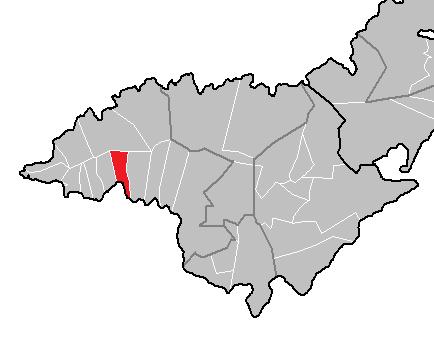Nua, American Samoa on:
[Wikipedia]
[Google]
[Amazon]
 Nua is a village located in Lealataua County within the Western District of
Nua is a village located in Lealataua County within the Western District of
 Nua is a village located in Lealataua County within the Western District of
Nua is a village located in Lealataua County within the Western District of American Sāmoa
American Samoa is an unincorporated and unorganized territory of the United States located in the Polynesia region of the South Pacific Ocean. Centered on , it is southeast of the island country of Samoa, east of the International Date Line ...
. Serving as the administrative center for the administrative unit called Samatua, Nua is part of a region that includes several small localities situated between Leone and the western cape along the southwestern-facing bay. These localities comprise Nua, Seʻetaga, Faʻilolo, ʻAmanave, and Afao
Afao is a village in southwest Tutuila Island, American Samoa. It is located on the island's short southwestern coast, between 'Amanave and Leone, to the southwest of Pago Pago. It includes the settlement of Atauloma. Afao is home to two places ...
. Samatua consists of six towns and translates to “Elder”.
History
On October 5, 1890, the steamship ''Alameda'' made a stop near the island of Tutuila. Among its passengers wereHenry Adams
Henry Brooks Adams (February 16, 1838 – March 27, 1918) was an American historian and a member of the Adams political family, descended from two U.S. presidents. As a young Harvard graduate, he served as secretary to his father, Charles Fran ...
, an American historian and writer, John La Farge
John La Farge (March 31, 1835 – November 14, 1910) was an American artist whose career spanned illustration, murals, interior design, painting, and popular books on his Asian travels and other art-related topics. La Farge made stained glass ...
, a renowned artist, and Rioza Awoki, a Japanese traveler. The trio disembarked and boarded a small schooner. They had plans of visiting Apia
Apia () is the Capital (political), capital and largest city of Samoa. It is located on the central north coast of Upolu, Samoa's second-largest island. Apia falls within the political district (''itūmālō'') of Tuamasaga.
The Apia Urban A ...
, however, adverse weather conditions forced them to alter their course, leading them to the harbor at Nua, where they spent their first night. During their stay in Nua, they encountered Wakea, a ceremonial village maiden, and attended their inaugural Samoan dance performance, which greatly impressed and enchanted them. Although Adams originally intended to remain in Sāmoa for only a month before continuing his voyage, he extended his stay to over three months.
During their stay in Nua, Adams, La Farge, and Awoki were captivated by the beauty and hospitality of the villagers. The village women, adorned with garlands of leaves and flowers, performed the traditional sivā dance. Illuminated by the flickering glow of kerosene lamps, the dancers moved with a fluidity and poise that evoked comparisons to classical antiquity. Adams noted the dancers' glistening, perfumed skin and the profound connection they appeared to have with their movements, which he compared to East Indian sculptures. Meanwhile, La Farge likened the scene to living art, observing how the aesthetics of the dance transported him to a "Greek Golden Age." The visitors were equally struck by the spiritual and cultural depth of the rituals at Nua, which contrasted sharply with their Western perceptions of dance and performance. This experience left an impression on the trio, influencing their writings and artwork in the years that followed.O’Brien, Michael (2007). ''Henry Adams and the Southern Question''. University of Georgia Press
The University of Georgia Press or UGA Press is the university press of the University of Georgia, a public land-grant research university with its main campus in Athens, Georgia. It is the oldest and largest publishing house in Georgia and a me ...
. Page 117. ISBN 9780820329567.
References